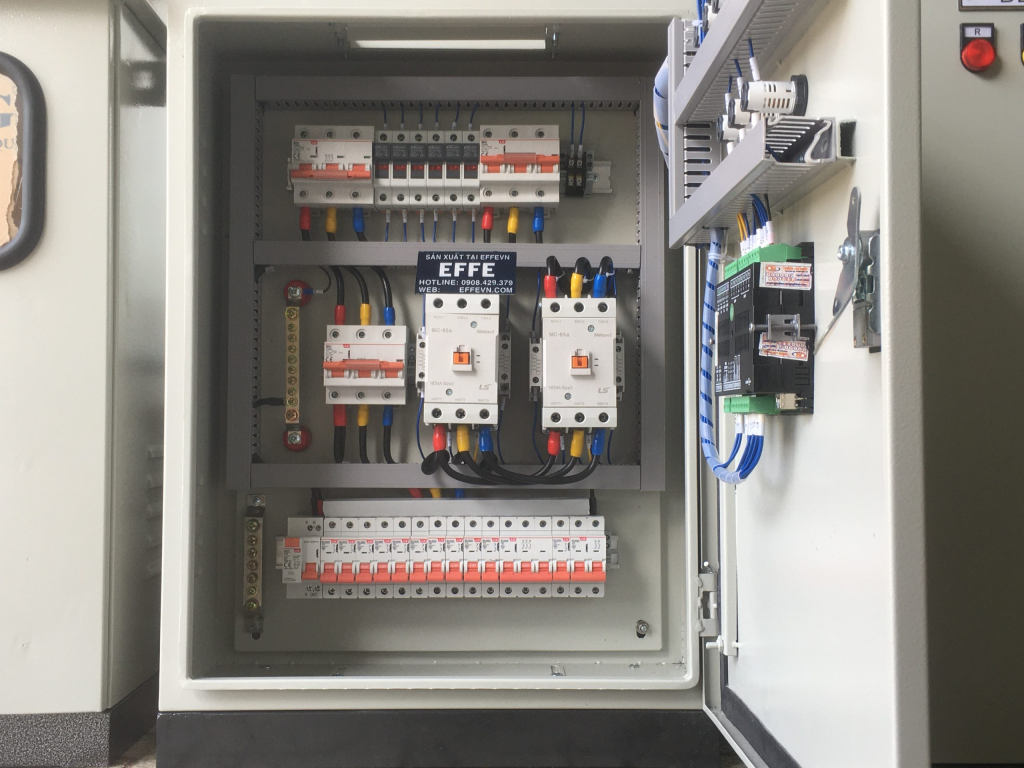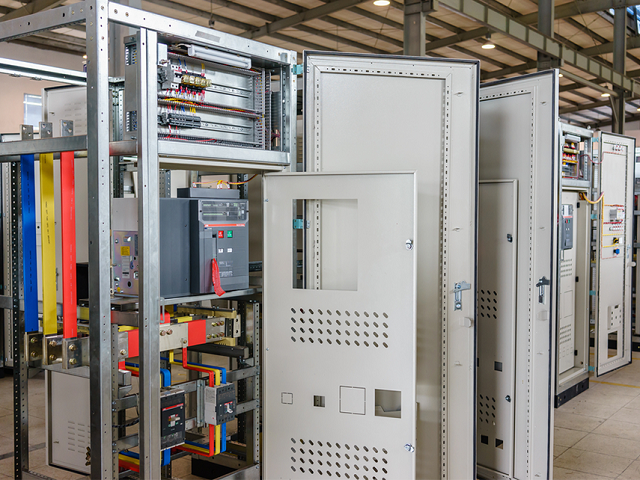What is an ATS cabinet? Innovative Power Solutions
What is an ATS cabinet? ATS cabinets – automatic power transfer cabinets capable of seamlessly switching between power sources ensure that critical systems and operations remain operational during power outages or power fluctuations. As technology advances, ATS cabinets continue to evolve, offering more advanced features and capabilities to meet the growing need for reliable power in various sectors.
What is an ATS cabinet?
ATS (Automatic Transfer Switch) cabinet is an essential component in electrical power systems, especially in scenarios where continuous power supply is critical, such as data centers, hospitals, and industrial facilities. The primary function of an ATS cabinet is to automatically switch the power source from the main power supply to a backup or alternate power source in the event of a power outage or voltage drop.

Structure of the ATS cabinet
The structure of an ATS (Automatic Transfer Switch) cabinet can vary depending on the manufacturer and specific application requirements. Below are the common components and structures found in ATS cabinets:
- Enclosure: The ATS cabinet is typically housed in a robust metal enclosure that protects the internal components from environmental factors and provides safety for maintenance personnel.
- Transfer Switch: The transfer switch is the core component of the ATS cabinet. It can be an electromechanical or electronic switch that enables the automatic transfer of power between the main power source and the backup power source. The transfer switch is designed to safely handle the connected equipment’s electrical load.
- Main Power Input: This is where the primary power source is connected to the ATS cabinet. It is usually linked to the utility power grid or another primary power source. Backup Power Input: The backup power source (generator or UPS) is connected to this input of the ATS cabinet. This power source is used when the main power supply fails.
- Controller: The ATS cabinet incorporates a controller that continuously monitors the status of both the main and backup power sources. The controller detects any power interruption or voltage drop in the main power supply and initiates the automatic transfer process.
- Sensors and Relays: The ATS cabinet employs various sensors to measure parameters such as voltage, frequency, and phase difference between the main and backup power sources. These sensors provide crucial data to the controller for making transfer decisions. Relays are used to control the switching mechanisms and ensure the proper sequence of operations.
- Control Panel: The control panel is typically located on the front of the ATS cabinet and provides an interface for users to monitor the status of the ATS, manually control transfers if necessary, and access configuration settings.
- Status Indicators: LEDs or display panels on the front of the cabinet indicate the current power source status (Main, Backup, or Transfer in progress) and other relevant information. Circuit Protection: To protect the connected equipment and the ATS itself, circuit breakers or fuses are installed within the cabinet.
- Wiring and Terminal Blocks: The internal wiring connects the various components within the ATS cabinet, and terminal blocks facilitate the connection of external power sources and equipment.
- Ventilation: In some cases, ATS cabinets may include ventilation systems to dissipate heat generated during operation and maintain a suitable temperature for the internal components.

Application of ATS cabinet
An ATS cabinet is an essential component in an electrical power system, especially in critical applications where a reliable power supply is crucial. Its primary purpose is to automatically transfer the power source from one supply to another when a disruption occurs, ensuring uninterrupted power to the connected load. Here are some common applications of ATS cabinets:
- Backup Power Systems: In buildings, data centers, hospitals, and other critical infrastructure, ATS cabinets are commonly used to facilitate a smooth transfer of power between the primary utility source and a backup generator or an alternative power source, like battery systems or renewable energy sources.
- Industrial Applications: In industrial settings where power outages could lead to costly downtime or hazardous situations, ATS cabinets are employed to switch power between the main grid and standby generators or other reliable power sources.
- Telecommunication Sites: Cellular towers, data centers, and other communication facilities require uninterrupted power to maintain connectivity. ATS cabinets are used to transfer power from the main grid to backup generators in case of power failures.
- Residential Backup Systems: In residential settings, ATS cabinets are utilized to switch power between the utility grid and backup power sources, such as generators or battery systems. This ensures that essential appliances and systems continue to function during power outages.
- Remote and Off-Grid Locations: In remote areas or off-grid installations, ATS cabinets play a vital role in managing power sources and ensuring a continuous power supply from various sources like solar panels, wind turbines, or generators.
- Commercial Buildings: In office complexes, shopping malls, and other commercial establishments, ATS cabinets are employed to transfer power between the main utility and backup generators during power disruptions to avoid business interruptions.
- Mission-Critical Facilities: ATS cabinets are crucial in places like data centers, emergency response centers, and military installations, where a continuous and stable power supply is paramount for critical operations.
- Marine and RV Applications: ATS cabinets are used in boats, ships, and recreational vehicles (RVs) to switch power sources between shore power and onboard generators or inverters.

ATS cabinets are designed with advanced controls and safety features to ensure a seamless transfer of power without any interruptions or damage to connected equipment. They monitor the quality of the power sources and trigger the transfer automatically when necessary, providing a reliable and efficient power management solution.

















